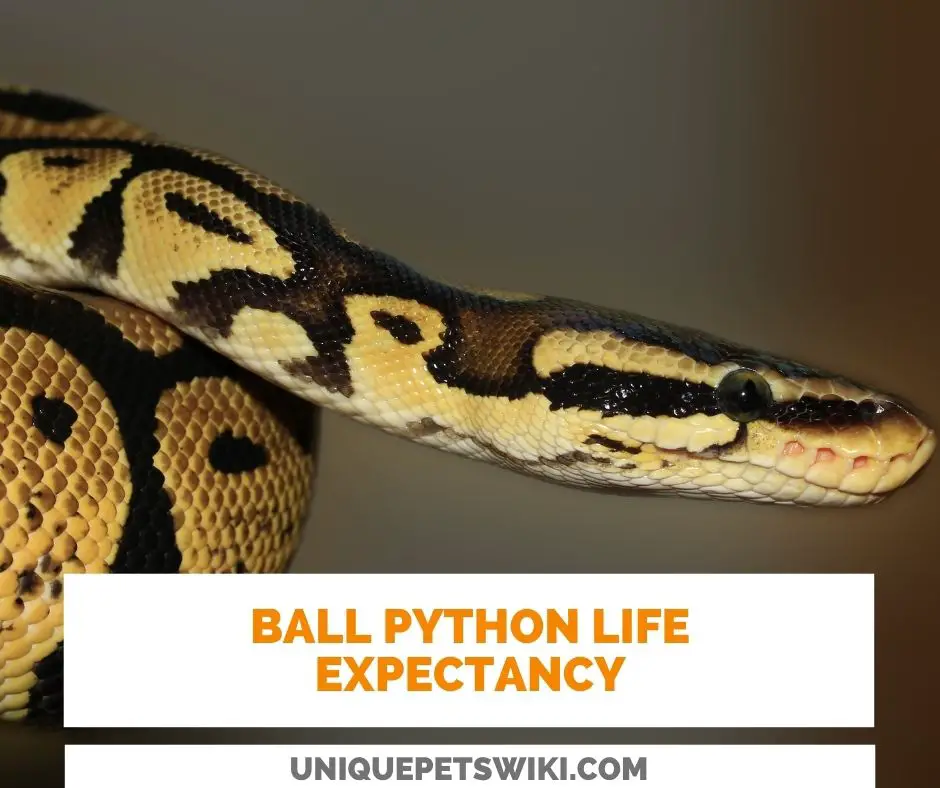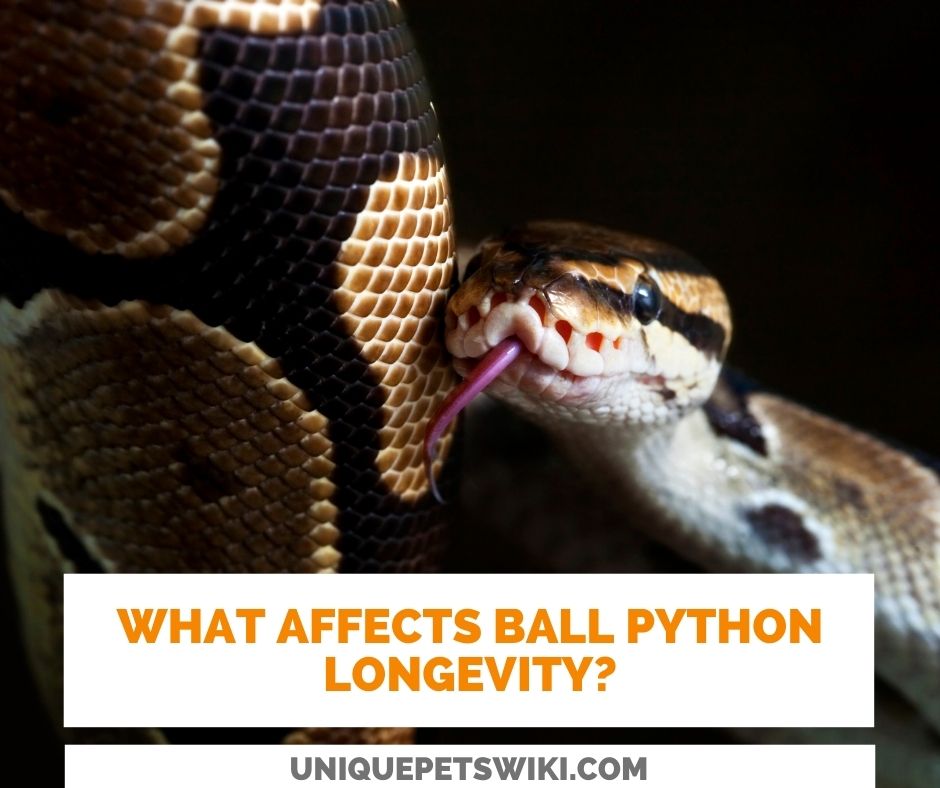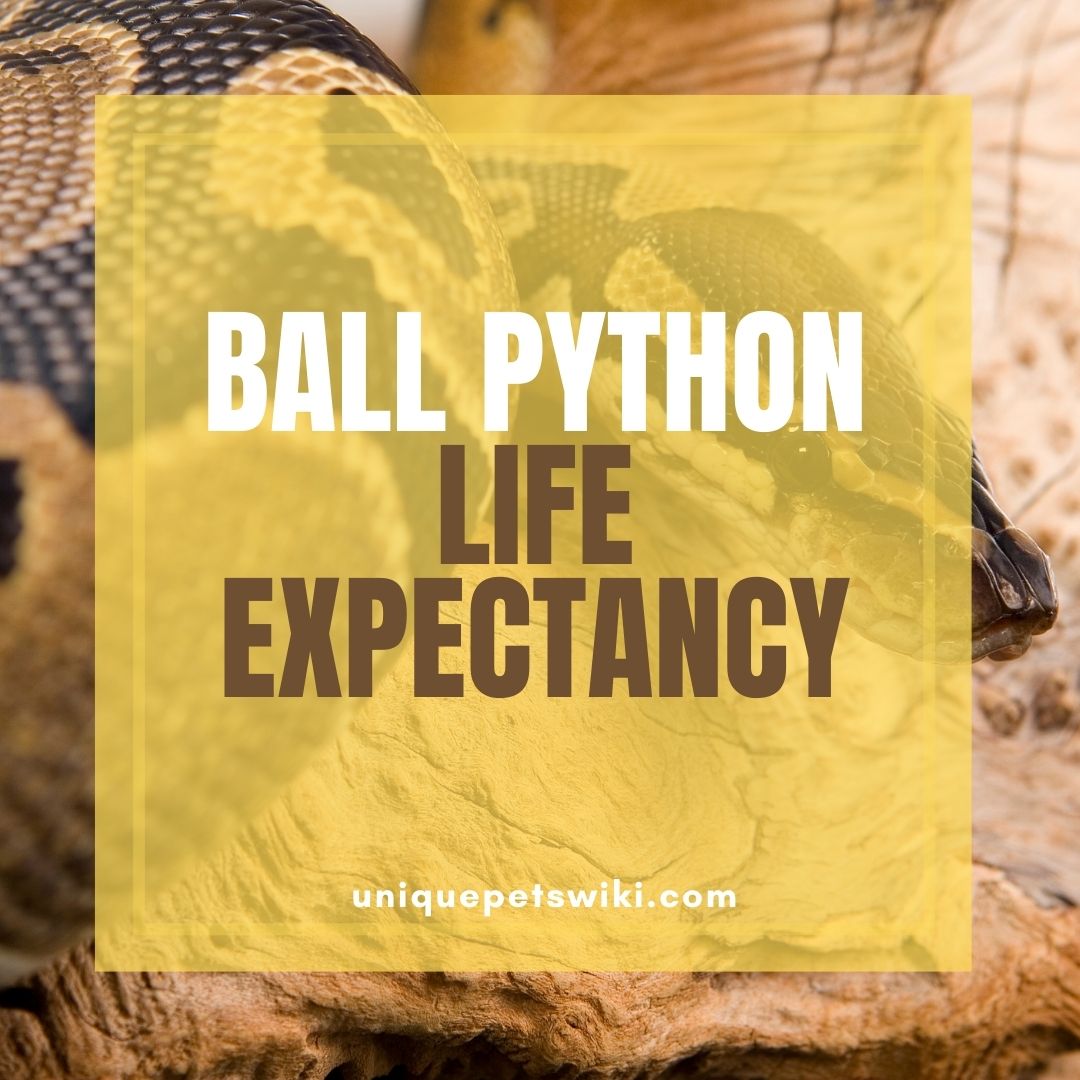Aside from the fanciful morphs and easy to care for criteria, breeders also take lifespan into consideration when choosing pet snakes. No one wants to lose a lovely pet so soon because the animal is short-lived.
A large number of exotic pets have a long life expectancy, which ball pythons is one. That makes them awesome pets. Ball pythons have a long lifespan. Their life expectancy is even more impressive in captivity than in the wild.
This can be attributed to factors such as the absence of predators and good care. But this doesn’t mean that captive ball pythons can’t die without reaching their life expectancy.
Most captive ball pythons rarely make it to full life expectancy when they die. This is why you need to know what could shorten your ball python’s life expectancy. You also need to know how to prevent them.
Thus, this article is designed to educate you on the factors that affect ball python life expectancy both in the wild and in captivity. The article is also going to help you with the best tips to enhance your snake’s longevity.
Contents
Ball Python Life Expectancy

Ball pythons have a long lifespan of 20-30 years. This is only with good care. Their life expectancy especially in captivity is set between 30-48 years. On average in the wild, ball pythons live 10 years. In captivity, they will go as long as 30 years or more.
Caring for ball pythons is a long term commitment. The type that before you say yes to getting it as a pet you must be ready for the responsibilities that follow. You must be ready to give it your time and finances.
Being that they are long-lived doesn’t guarantee that your snake will live long. Your care determines how long. Thus, to be physically present for your pet means early detection of faults and correction.
Ball Python Life Expectancy In The Wild
Wild ball pythons do not enjoy the luxury of living long like their captive counterparts. They live for a good number of years and then die. On average, wild ball pythons live for 10 years. They can go to 15 or 20 years but with much precaution.
This is because in the wild they are predisposed to many dangers such as predators and diseases. Once their immune system is weak and cannot fight off diseases again they’ll die.
That said, let’s look in detail at the factors that shorten ball python’s life expectancy in the wild.
What Affects The Life Expectancy Of Ball Pythons In The Wild?

As earlier stated, wild species of ball pythons have a shorter life expectancy of 15 years because of some factors. These factors include:
Endangered By Predators
As much as ball pythons are considered as snakes that can grow to a big size of 5 feet, in the wild, they’re vulnerable to other larger species of snakes. In some cases, their predators might not be a snake but other larger wild creatures.
Babies and juveniles that are still small are much more vulnerable than adults. Being that they don’t defend themselves aggressively aside from ‘the curling into a ball’ prank, they stand a little chance of escaping from hungry predators.
Because of this, a large number of wild ball pythons die before they reach adulthood. However, once they attain adult size, their chance of being killed by predators becomes slim.
Illness Or Disease
Nobody cares for wild ball pythons. Whether they could survive their environment during harsh weather conditions or could fight diseases is determined by nature. It is a matter of who fits and lives long. In the wild, ball pythons are predisposed to a lot of diseases.
These diseases take a toll on them. Since they rely on their environment for health and survival, it becomes a challenge to fight diseases for a longer time.
Moreover, wild ball pythons fight diseases naturally with their immune system. Thus, when their immune systems are weakened or become stressed, they can no longer fight off diseases. The effect is that they end up dying before reaching their life expectancy.
Much like in captivity, ball python’s life expectancy in the wild is affected by diseases such as parasitic infestation, bacterial, fungal, and viral infection, respiration infection, skin infection, and many others.
Hunted As Food
Ball pythons are non-venomous snakes. Which means that they pose no health risk if consumed as food. In its native home in Africa, wild ball pythons are hunted for their beautiful skin colors.
Their skins are used as leathers for belts and small bags. They are also hunted for food. This wildlife haunting reduces their life expectancy as well in the wild.
Ball Python Life Expectancy In Captivity
As mentioned earlier, captive ball pythons live longer than wild species. The reason is simple, good care. They don’t go out foraging, hence there’s no threat from predators. They’re not intentionally killed for food or leather.
Besides, when they are sick, there’s a ready and willing keeper to take them to a vet. With all these care, captive ball pythons have a life expectancy of 30 years. In rare cases, they’ve been seen to live for as long as 40 years or even 50years.
However, even with these care, some captive ball pythons seldomly make it to full adulthood when they’re reported dead. This is because just as wild ball pythons are vulnerable to predators and diseases; captive-bred are predisposed to stress. Stress comes as a result of many factors which will be discussed shortly.
What Affect Ball Python Life Expectancy In Captivity?
The factors that affect ball pythons’ life expectancy in captivity include diet, poor health, poor husbandry, wrong cage set up, and many others. The fact that they’re captive bred is not a guarantee that they’ll live longer.
These factors to be discussed play significant roles in determining their longevity. And you must understand how these factors can affect them negatively. Good knowledge of them will make you a good keeper for your pet. Keep reading.
Diet
A good meal followed by a fresh drink (water) gives birth to a healthy ball python. Note that the food must be a nutritious whole prey to be good. It can be administered live, pre-killed, or frozen-thawed.
In captivity, ball pythons are often fed pre-killed prey or frozen-thawed rats and mice. It is not advisable to offer them live prey because that poses a threat of killing them should the rat struggle to free itself.
Why offer them thawed feeder prey? The explanation is simple, ball pythons are heat-sensing hunters. They forage for prey in the wild by sensing the body temperature of their prey.
Since they’re endothermic, they feed on mammals, or the least they eat warm prey. Thus, you’ll have to ensure that you replicate this wild nature for your captive pet. And to eliminate the dangers of a live rat injuring your snake, do not offer it live prey.
How then can diet affect your snake? Wrong administration of food is as detrimental to their life as sparing feeding. If your ball python isn’t eating and digesting well regularly as supposed to, then it’ll affect its health.
You’ll soon notice an issue when there’s a weight loss in your snake within a short time. That said, do not make the mistake of power feeding or force-feeding your snake.
There are many genuine reasons that your snake will not want to eat. During those times, if you forced your snake to eat, you may create a problem for it. Read more on proper feeding of captive ball python.
Wrong Cage Set-Up
This is as important as their diet. Their cage set up includes the entire habitat. The rule of thumb in setting up their habitat is to make it simulate the wild.
Ball pythons are nocturnal snakes. In the wild, they live in hides and burrows during the day and come out in the night to hunt. That said, in captivity, you must ensure that their enclosure is near dark at all times.
Failure to provide such an environment, the snake will be stressed most of the time. To achieve a near dark enclosure, you’ll need to use cage accessories such as hides and branches. You’ll also need cage decorations like plants to keep the enclosure dark but less cluttered.
Ball pythons are endothermic. They rely on their environment to regulate their body temperature, digest food, and breed. For this reason, the ambient temperature of their captive habitat should be maintained within the range of 78° F – 80° F.
The temperature of the warm side (basking spot) should be 86° F – 90° F. While the cool side should be 78° F. One thing observed among all captive ball pythons is that they don’t like changes in their cage set up.
These changes are a part of poor husbandry. Once this happens they get stressed out, and the effect is a weakened immune system that cannot fight off infections.
We all know that ball pythons require less attention since we aren’t feeding them every day, but it is important to regularly check all temperatures in their cage. This is very important especially if your lighting and heating sources aren’t trusted brands.
Why do I emphasize this point? It is because poor humidity levels will cause retained shed, respiratory infection, and many other issues. Hence if your goal is to enhance your pet’s longevity, You Must Maintain Proper Cage Temperature At All Times.
Poor Husbandry
If something is wrong with your husbandry, it’ll certainly tell in your snake’s behavior. Poor husbandry such as an unclean enclosure will make your snake often want to escape.
Come to think of it, who wants to stay in a dirty environment? Absolutely no one, including your pet snake. The best tip is to evaluate your husbandry from time to time and improve where necessary.
As a breeder, you cannot outgrow knowledge. This is to imply that from time to time you have to research and learn more about caring for your snake. Where your choice of accessories doesn’t give you what you want, you can change the brand to a more reliable one.
A deep learning on bad husbandry in reptile.
Poor Health
With all other factors properly maintained, captive ball pythons wouldn’t get sick. But in very many cases, sickness or the presence of diseases are a result of failure in the factors discussed above. You failed to feed your pet regularly, it suffers weight loss.
You feed it too much, it becomes obese. You failed to provide the right temperature, it has issues digesting its food. The enclosure is too wet, it breeds parasites that later attack the snake.
You failed to provide clean fresh water regularly, the snake becomes dehydrated. The cage is too open with no hides and plants to ensure security, the snake becomes stressed. Hence, the list continues and if proper care isn’t taken the snake may die before full maturity.
For ball pythons, there’s no minor sickness. This is because what you thought is minor sickness might just be a symptom of a bigger problem.
As a matter of precaution, I’m not saying that throughout the entire life of your pet that it’ll not get sick. Neither I’m I saying that it’s not possible to have faults in your husbandry or feeding.
The point here is that all factors that could shorten the lifespan of your ball python should be eliminated. If it can’t be completely eliminated, it should be to the least minimum.
Wrapping Up
Fully understanding your ball python will help you better take care of them. As a suggestion, we would recommend you to get the best ball python book. Not to become an expert on ball python care but will help you avoid the common mistake in new pet snake owners.
Last update on 2022-12-29 / Affiliate links / Images from Amazon Product Advertising API
Being that ball pythons can adapt in captivity when given good care, they have a long lifespan. By nature, they have the potential to live long even in the wild. But how long is up to you to determine by giving it necessary requirements for longevity.
If you decide to deprive it of what it needs, then you shouldn’t be taken aback when your pet dies a few years into its life. A healthy and happy ball python will likely live long. But the one with stress and diseases is sure to say goodbye soon.
So you choose. Keep in mind that these factors are interdependent. Failure in one will lead to problems in the other.

